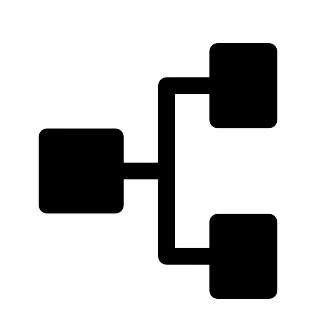Macromolecules Flashcards
Learn about Macromolecules efficiently with AI-generated flashcards designed for
optimal learning and retention.
optimal learning and retention.
What are macromolecules?
Macromolecules are large, complex molecules that are fundamental to various biological processes and structures, typically composed of thousands of atoms formed by the polymerization of smaller subunits called monomers.
What are the four major types of macromolecules essential to life?
The four major types of macromolecules essential to life are proteins, nucleic acids, carbohydrates, and lipids.
What is polymerization?
Polymerization is a chemical process that combines small molecules called monomers into a larger, more complex structure known as a polymer.
What are the two primary types of polymerization?
The two primary types of polymerization are addition (chain-growth) polymerization and condensation (step-growth) polymerization.
What are monomers?
Monomers are the basic building blocks that form larger macromolecules, such as amino acids for proteins and nucleotides for nucleic acids.
What role do proteins play in the body?
Proteins play critical roles in the body, including catalyzing metabolic reactions, providing structural support, and regulating bodily functions.
What are amino acids?
Amino acids are organic compounds that serve as the building blocks of proteins, consisting of a central carbon atom, an amino group, a carboxyl group, a hydrogen atom, and a distinctive side chain.
What are nucleic acids?
Nucleic acids are large biomolecules essential for all known forms of life, composed of monomers called nucleotides, which include DNA and RNA.
What is the function of carbohydrates?
Carbohydrates are a significant source of energy for the body and are found in foods like grains, fruits, and vegetables.
What are lipids?
Lipids are a diverse group of organic compounds that are insoluble in water and play critical roles in biological systems, including energy storage and forming cell membranes.
What are phospholipids?
Phospholipids are a class of lipids that are major components of cell membranes, forming lipid bilayers due to their amphiphilic nature.
What are triglycerides?
Triglycerides are a type of fat found in the blood, used for energy, and stored in fat cells for later use.
What are steroids?
Steroids are organic compounds characterized by a specific molecular structure consisting of four carbon rings, playing roles in metabolism and immune response.
What is cholesterol?
Cholesterol is a waxy, fat-like substance found in all cells, essential for producing hormones and vitamin D, and is transported in the bloodstream by lipoproteins.
What does LDL stand for?
LDL stands for Low-Density Lipoprotein, often referred to as 'bad' cholesterol, which can lead to cardiovascular diseases if levels are too high.
What does HDL stand for?
HDL stands for High-Density Lipoprotein, known as 'good' cholesterol, which helps remove other forms of cholesterol from the bloodstream.
What is the role of proteins in the immune response?
Proteins contribute to the immune response by forming antibodies and facilitating communication between immune cells through signaling proteins.
What is the significance of nucleoprotein complexes?
Nucleoprotein complexes are formed when proteins bind to nucleic acids, facilitating processes such as transcription, replication, and repair.
What are complex carbohydrates?
Complex carbohydrates consist of long chains of sugar molecules and include foods like whole grains, legumes, and starchy vegetables.
What is the function of fatty acids and glycerol in lipids?
Fatty acids and glycerol are the building blocks of lipids, combining to form triglycerides and phospholipids.
How do proteins interact with RNA during translation?
During translation, messenger RNA (mRNA) interacts with ribosomal proteins and ribosomal RNA (rRNA) to form the ribosome, which synthesizes proteins.
What is the importance of maintaining cholesterol levels?
Maintaining a healthy balance between LDL and HDL cholesterol is crucial for cardiovascular health and preventing heart disease.
What are the health risks associated with high triglyceride levels?
High triglyceride levels can increase the risk of heart disease and may indicate metabolic syndrome.
What is the role of dietary proteins?
Dietary proteins are essential because the body cannot synthesize all the amino acids it needs, requiring intake from sources like meat, fish, and legumes.
What is the function of histone proteins?
Histone proteins interact with DNA to form chromatin, playing a critical role in the regulation of gene accessibility and expression.
Why Use Flashcards for Learning About Macromolecules?
Active recall through flashcards strengthens memory pathways and improves long-term retention. This method is particularly effective for learning about Macromolecules because it breaks down complex concepts into manageable chunks, making learning more efficient and engaging.
Similar Flashcards
Create a Macromolecules
Concept Map
Take your learning deeper with Heuristica's AI-powered concept map maker. Visualize connections between key ideas and strengthen your understanding of Macromolecules.
